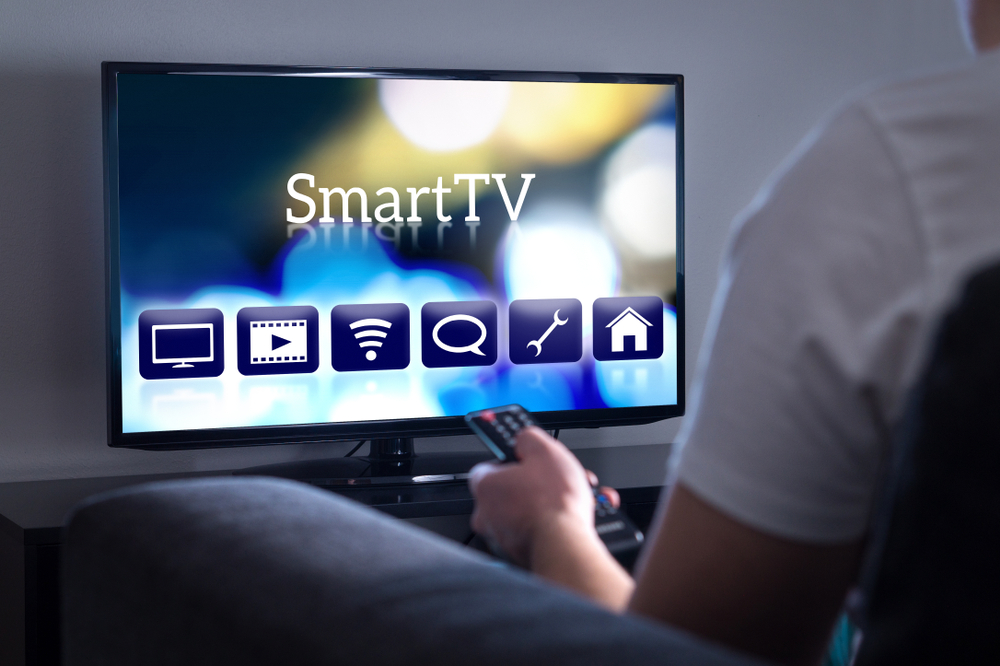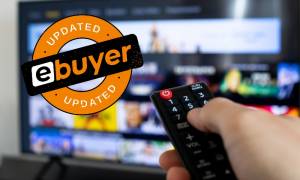What is ‘home tech’?
Our homes are environments we create for our private lives – though in recent times they have become our workplace, too. The last couple of years have seen a massive shift in working patterns. Many people are now working from home for at least part of the time due to the pandemic. In some cases this has meant that the tech involved in our daily working lives has altered. In this article we’ll be looking at the ideal WFH set-up, the bits and pieces you need to ensure a successful and productive working environment.
We’ll also be looking at leisure, and the tech involved in making sure your own time is relaxed and well catered for – things like TVs and gaming consoles. Plus, more domestic technology such as smart home tech and security systems. This is truly beneficial tech you can use ‘in the background’ to keep your home life ticking over.
Working From Home in 2022
There are definitely things you need to make working from home a comfortable way to go about your professional life. In the case of what is the main piece of technology you will use – a laptop – it’s likely that your employer will provide this for you. One of the main reasons for this is that the IT department of your company or organisation can ‘pre-load’ the laptop with the software necessary to complete your tasks so that you don’t have to use your own desktop PC or laptop (and, also, therefore any licensing issues associated with that software are covered).

Laptops
In those instances where you will be using your own laptop – or if you are an employer who happens to be reading this article and is looking to ‘kit out’ members of the workforce with appropriate tech – you’ll definitely need to think about devices which are powerful enough to handle professional tasks. In many cases this will probably only mean word processing, emailing and other ‘office’ applications, but there is a list of the things that your device should have the spec to do when working from home.
Video calling, for instance, has become one of the best ways of communicating with colleagues – and video meetings through applications such as Zoom have become the norm for larger groups. Although using these platforms presents challenges the first time, or couple of times, that you use them, once you’ve had a couple of meetings any anxiety or awkwardness about using this tech settles down. You’ll be Zooming like it’s second nature really quickly.
So, in terms of the laptop you choose, you’re going to need something with internet capability – and, let’s be honest, you’d be hard pushed to find a laptop on the market these days which doesn’t have Wi-Fi installed. It will also need the capability to handle video – so a decent graphics set-up – but again this is a feature that modern laptops have, built-in. A decent-sized screen is also a necessity. If you are going to be working long hours, and multi-tasking, it’s a pain to have to try and cope with a minimal sized screen. Also worth considering is whether the laptop has some form of USB connectivity, should you be using an external hard drive for transporting documentation between home and the office.
Chromebooks
An alternative, if you are working from home, is a Chromebook. This is, basically, a laptop – but it works through internet-based applications and cloud storage rather than everything being on your device itself. You save files to the cloud rather than to a laptop hard drive, and you stream rather than download, so your working life is simpler, easier and much more organised. There is less built-in hardware so an additional benefit is that the Chromebook’s size is kept to a minimum. Although not commonly used for WFH purposes, a Chromebook is worth thinking about.
Desktop PCs
These days it’s likely to be considered an old war-horse – that desktop PC, sitting mightily on (or under) your desk, and providing solid computing power. Of course, many laptops these days are just as powerful, but the desktop PC is still the preferred choice for many people. It’s unlikely that your employer will provide a desktop PC for WFH purposes, as a laptop is (obviously!) portable, which means when hybrid working is the modus operandi, or when there is a return to the office, your device can go with you.
A desktop PC, however, will provide you with all sorts of other non-work benefits – including the possibility for some high-spec gaming! In fact, a gaming PC is a great option. Just don’t play when you’re supposed to be grafting! We’ll get to leisure tech in a bit! Another thing to think about, when considering desktop PCs, is what else you will need to use with it. Peripherals such as a keyboard and a mouse. And so let’s talk about peripherals…
Peripherals
The keyboard is one of your three main interfaces with your desktop PC (although, of course, if you prefer working on a full-sized keyboard your laptop will have facility for you to attach one). The others are your monitor and your mouse. Again, should you wish to, you are likely to be able to attach these to your laptop to make your working methods more comfortable. Anyway, you need these three things to be able to use your desktop PC most efficiently. There is a wide range in each category, and it is worth taking a moment to consider whether going for the ‘budget’ option of each peripheral is worth it if you are going to be using it every day. Browse the Ebuyer website for a selection of the best keyboards / mice, and a fantastic range of monitors of different sizes and specifications.
Accessories
Comfort while you are working is of paramount importance. So if you are using a laptop you should consider your accessory options, and think about investing in a riser, which is a piece of kit used to elevate the position of your laptop. Basically it’s a stand on which to place it to make it higher, and more in line with your vision. This simple ‘fix’ will bring a lot of benefit to your feeling of comfort, as the problems of neck and back pain (and even injury) associated with inappropriate positioning are well known.
Similarly, you should consider the chair that you are sitting in for your working hours. This needs to provide you with the correct support, so something ergonomically designed and tested is what you should be thinking of buying. Again, you can browse the Ebuyer website for a great selection of chairs.
Remember, your comfort while you are WFH is a priority – and for the same reason you should spend a little time thinking about your working environment at home. Do you have enough desk (or table) space? Are you working in a quiet and calm environment, free from distraction? We have published articles previously which consider all of these things in more depth…
Once your working day is done, it’s (hopefully) time to relax, so in this next section we’re going to be looking at some of the technology which helps you do just that…

Leisure time tech!
Television
Since the 1950s, television has become a central part of the domestic leisure experience. For some it can still be something of a ‘no go’ – and we’ve even heard it referred to as ‘the idiot’s lantern’… But to be honest there’s nothing quite like settling down in an evening to watch some TV. These days it doesn’t have to be mindless, at all. That part of ‘the idiot’s lantern’ is personal choice! There is so much content available, and with the advent of streaming, there are plenty of films, shows and documentaries constantly available which are thought-provoking and even educational. You wouldn’t call a David Attenborough documentary for idiots, would you?! Let’s be honest, though… A good chunk of us are often just looking forward to ‘switching off’ from the stresses and strains of daily life and zooming out for a bit by tuning in to a soap opera, or maybe this week’s Strictly, or even some sport. Or reruns of, of course, Star Trek.
Whatever the reason you want to watch television, it’s always good to make sure you have the best quality you can afford. These days, TVs are available in many sizes and an array of different resolutions (such as 4K and Full HD). No longer is there such a thing as that fuzzy picture viewers used to suffer in the medium’s earliest days. Whenever your grandparents used to get a new TV (say, making the leap from black and white to colour in the late 1960s) they would wax lyrical about their new TV’s “lovely picture”. That is something that has never changed. With each advance in televisual tech – screen resolution, screen size, etc – each subsequent generation has definitely echoed its ancestors’ excitement!
Let’s have a look at what’s available in 2022…
4K TV
This resolution (sometimes known as Ultra-HD) has been ‘on the market’ for a while, now, so it’s not super-new for ’22 or anything. But it’s definitely the one you should be thinking about, as it’s pretty much the best aspiration for viewing pleasure.
Full HD is impressive enough, with a resolution of 1920 by 1080 pixels, but 4K has improved even from there! It has four times as many pixels on screen, which means that there are an incredible 8 million active pixels. Yes, that’s right. Eight million! In the amount of space that a HDTV holds a pixel, a same-sized 4K can hold four. As a consequence of this advance in quality, 4K is so much ‘sharper’ than any previous iteration of screen resolution.
To get the very best out of a 4K TV you will need the source material to be in 4K – but some TV manufacturers integrate upscaling technology into their sets. This means that lower resolution content is upgraded to 4K, ‘artifically’. Obviously any upscaled content is not as good as actual 4K content but it does offer a significant improvement. As great as 4K is, for some people HD or Full HD is more than enough… It’s worth remembering that the size of the room dictates the size of the TV you’ll want to put in it, and can therefore be a factor in deciding whether to opt for 4K or a slightly less high quality option. We’ve created a graphic to help you out with the screen size / room size conundrum!

Smart TV
A smart TV is a high-quality television which includes an interactive interface coupled with internet connectivity. This means quick and easy access to online on-demand broadcasters like Amazon Prime or Netflix (and so on), and to on-demand content from BBC iPlayer and ITV Hub and the like.
Smart TVs usually also have a range of apps, and may even include the option for full web browsing (like that you can do on your PC or laptop). This means that you can check your socials or do an internet search on the big screen! Some smart TVs can also use Wi-Fi to connect to other devices such as smartphones and tablets, and it’s possible that with the right set-up you can also stream content from there. Perhaps it’s worth talking about smartphones and tablets a little bit, here…
Smartphones
Although you wouldn’t necessarily consider a smartphone to fall straight into the category of ‘home device’, we’re doing so here because it offers more capability than merely being a ‘phone. You can use it to control all sorts of aspects of your daily life because it can integrate easily into the smart technology set-up of your home. In fact it’s close to being essential. Think about that video doorbell you installed… When you’re out and about, you can receive notifications on your phone, and you can check the live feed from the video camera of the doorbell to see who is at the door. So it’s not really just a ‘phone! It’s smart!

Tablets
It’s a similar story for tablets. They can be used as not just a means to access the internet and check on your socials or your emails. Basically a tablet can be thought of as the half-way point between smartphones and laptops, and so has some of the functionality of both. It’s a handy device, tactile and convenient in size. Incredibly useful. Perhaps the most noted version is Apple’s iPad, but there is a whole range of tablets by different manufacturers. They can be used as an integral, and central, part of your smart home set-up (and in a moment we’ll look at what makes for a good smart home). Check out Ebuyer’s website here.
Smart home technology
Remember those old sci-fi films where the home environment was basically computer controlled? The hero (or villain!) would be awoken by a sultry computer voice, slide out of bed and say “coffee” and there’d be a steaming hot cup of the finest waiting for him by the time he’d been hover-chaired to the dining area? Well, having a smart home is a little bit like that, though without the hoverchair. A smart home is, in all seriousness, basically a partially computer-controlled environment which removes some of the mundanity and the routine tasks from your life and gives you more time and, therefore, freedom.
A smart home is a dwelling where things like lighting and heating can be controlled using a smartphone or tablet (or laptop or desktop PC). In fact, you can control pretty much anything – from plugs to lightbulbs, and even CCTV cameras or your doorbell!
Smart devices have been created with simplicity in mind. Once installed, running a smart device in your home (and interconnecting with other smart devices within the home) should be relatively easy. You definitely don’t need to be an expert on tech to make your home a smart home. All you really need is an internet connection, a smart home device and hub, and the app (and something on which to run the app, of course).
It’s possible to build up a relatively sophisticated smart home, in which almost everything that can be smart is smart. But a good place to start for those who wish to just try out the idea before taking a deeper dive, is the smart plug. This is a plug which you plug into a standard wall socket, and into which you then plug a device. Let’s say, seeing as we mentioned coffee a couple of paragraphs ago, your kettle. Yes, it’s possible to control your kettle from your smartphone. You could be a few minutes away from home, or you could be laid in bed upstairs – either way you can instruct the kettle to boil, so that your brew is ready just as you walk through the door.
Of course, a more serious used for smart technology in the home is the CCTV system and the smart doorbell. You can also get smart locks, too.

Smart doorbells
This is like a ‘normal’ doorbell but way better because it has added sci-fi. A smart doorbell is accessible via an app on your smartphone (a different app for different brands of doorbell) or tablet etc. This allows you to monitor who is at your door, in real time, when you are not at home or when you are at home but it’s not convenient to immediately go and answer.
You should also be able to communicate with whoever is there as most models of smart doorbell have a two-way comm system – in other words a speaker and a microphone – built in. The benefit of this is that you can speak to visitors when you’re not there, and if it’s a delivery person you can explain to them where to leave your parcel. Brilliant!
CCTV and security systems
Covered in much more depth elsewhere on the Ebuyer blog, it’s worth a quick refresher here. A CCTV system is a method of keeping an observant eye on your property – whether that means property as in the building you call home, or property as in the things within it. Yes, CCTV systems can be fitted both inside and outside the home.
A CCTV security system comprises a camera, or several cameras, located and fixed at specific points on your property. These relay a live feed to your smartphone, tablet or laptop, and you can also record footage. Most of them have ‘night vision’ facility, so can still record clear pictures when it’s dim or dark outside. Very useful should you be unfortunate enough to suffer a burglary or some kind of damage to your property. Ebuyer stocks a range of CCTV systems including starter kits – where you can add cameras as you go along.
So that’s our round-up of home tech for 2022. Much the same as every other year, Ebuyer offers great value – so take a browse of our website. Get your home safe, secure and comfortable for the year ahead… and get your home office set up just right. Happy New Year!

























